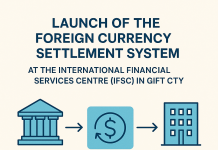Following a hearing on Tuesday regarding the Securities and Exchange Commission’s (SEC) oversight of cryptocurrency businesses, legislators reconvened on Wednesday for another hearing titled “Understanding Stablecoins’ Role in Payments and the Need for Legislation.”
The hearing, sponsored by the newly established House Subcommittee on Digital Assets, emphasized the significant gap in federal law governing digital assets, irrespective of their application.
Initial discussions surrounding the 73-page draft legislation considered during Wednesday’s session raised hopes that Congress might integrate stablecoins more thoroughly into the legislative framework by passing the first substantial crypto legislation shared by politicians in 2023.
The proposed legislation aimed to authorize both banks and non-banks to issue stablecoins.
However, these aspirations were thwarted by what observers described as bipartisan squabbling among the attending lawmakers.
Addressing the bipartisan divide, Subcommittee Chairman French Hill, R-Ark., emphasized the urgency of collaborative efforts to enact stablecoin payment legislation.
Hill underscored concerns about digital asset developers relocating from the United States to countries with more established regulatory frameworks, highlighting the detrimental impact on innovation, employment, and consumer and investor protection.
During the tenure of Democratic control in the House, the discussion draft of stablecoin regulation, titled “A bill to provide requirements for payment stablecoin issuers, research on a digital dollar, and for other purposes,” was authored by then-Chair Maxine Waters, D-Calif., and ranking member Patrick McHenry, R-N.C., of the House Financial Services Committee.
The hearings shed light on the complexities and contentious issues surrounding stablecoin regulation. While there is a recognized need for legislative clarity in this rapidly evolving space, achieving consensus among lawmakers remains a formidable challenge.
The debate underscores broader tensions within Congress regarding the appropriate regulatory framework for cryptocurrencies and digital assets. Partisan differences, coupled with divergent views on the role of government in financial innovation, further complicate efforts to enact comprehensive legislation.
The implications of stablecoin regulation extend beyond the financial sector, impacting technological innovation, economic competitiveness, and consumer protection. As such, finding common ground on this issue is crucial for maintaining America’s leadership in the digital economy.
Moving forward, stakeholders will continue to closely monitor developments in Congress as lawmakers navigate the complexities of stablecoin regulation. The outcome of these deliberations will shape the future of the cryptocurrency industry and its broader implications for the financial landscape.
In conclusion, the hearings on stablecoins underscore the challenges and opportunities associated with regulating digital assets. While bipartisan support for legislation exists in principle, partisan divisions and divergent policy priorities present obstacles to achieving consensus. As policymakers grapple with these complexities, the need for collaborative, forward-thinking approaches to stablecoin regulation becomes increasingly apparent.











